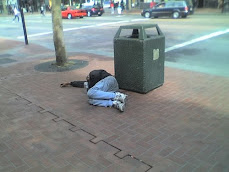I know it might look like there is only one tournament when watching the World Series Of Poker on TV, but in reality there are over fifty tournaments ranging from $500 to $50,000 to enter every day, plus over fifty tables reserved for cash games, the entire two and a half months the series is at Rio All-Suite Las Vegas Hotel and Casino. This year the WSOP started on Wednesday, May 27, 2009 with the Casino Employees two-day $500 event.
The WSOP attracts thousands of players from all over the world with varying degrees of poker skill and bankrolls. Some of the people entered in the Main Event for $10,000 do not use their own money and others save all year to participate in this event. Quite a few people win seats from online sites, like Full Tilt Poker and Poker Stars and come early and play live with their own money or the stipend they won. The high-profile professionals have sponsors that not only put them in the Main Event (if not all of the events) pay them a fee, plus a per Diem. Las Vegas poker grinders usually get someone to stake them in the Main Event or several of the tourneys with smaller buy-ins.
However, not all of the players who fly into Las Vegas, from all parts of the world during the WSOP, intend to play in the WSOP tournaments. Some people like to play the other tournaments offered throughout Vegas, like in the Venetian Deep Stack Extravaganza (DSE) poker tournament series or Caesars Palace’s Mega Stack poker tournament series, with entry fees as low as $330, both running concurrent with the WSOP. However, some merely come to play in the ring games. During the months the WSOP is underway the cash games all over Las Vegas get juicier than any other time of year. Some rounders will play one or many of the WSOP satellite games at Rio to win coupons good for WSOP tournament entry. Last year, I saw many players win thousands of dollars in tournament entry coupons at the $100 satellite tables, sell them for cash, and go play the ring games.
Tournament poker playing is much nuttier than live cash games in general; so many players come merely to cash in on that crazy action. That wild hyper-aggressive play seen on TV just looks like money in the bank for the grinders who have been waiting all year for the WSOP to come into town . Shuffle up and deal!
Here we go again ... scene from Mega Shark Vs Giant Octopus
Nuclear terrorism is only the latest fictional indignity to hit the bridge. In the last decade directors have gone to town on the landmark. It's been variously melted (in 2003's The Core), bitten in two (in this year's Mega Shark Vs Giant Octopus) and picked up and dumped further up San Francisco Bay by a disgruntled super villain (in X-Men: The Last Stand in 2006).
In fact since 9/11 it's been rare to see any other American architectural icon so regularly and explicitly attacked on film. New York used to be an action/adventure director's playground, but for much of this decade the real-life fall of the twin towers has made it difficult to justify fictional onslaughts on the city's landmarks. The notable exception – Matt Reeves's controversial schlock-horror flick, Cloverfield, in which a giant sea monster beheads the Statue of Liberty – was damned by both right- and leftwing media for trivialising a mass trauma. Liberal news site Salon.com's Stephanie Zacharek spoke for many upset by the film when she accused Reeves of "[harnessing] the horror of 9/11 ... and [repackaging] it as an amusement-park ride".
In a genre that revels in wringing cheap thrills from expensive spectacle, that sort of criticism is hard to avoid. Still, directors have done their best to dodge controversy by detaching the fictional threat of terror from reality to a degree that they wouldn't have done 10 years ago. Danger has been neutered through amplification. Terror (often the product of otherworldly forces rather than human action) is directed at the city in general rather than a specific landmark (see 2007's I Am Legend, last year's The Happening and, especially, Sam Raimi's Spider-Man trilogy) or made so vast in scope that its effects are felt globally (2004's The Day After Tomorrow).
In comparison the Golden Gate bridge is a politically safe setting for a director's worst case scenario. It's far from New York (and close to Hollywood), instantly recognisable to an international audience and emotionally evocative to an American one. Unlike the Statue of Liberty, it's a genuine American construct, built during the Great Depression and therefore symbolic of the country's resilience – a visual metaphor for American unity, there to be smashed whenever a director needs to fast-track an audience into alienation and panic.
At the bridge's opening on 27 May 1937, its designer, Joseph Strauss, spoke of "[a bridge that] stands before you in all its majestic splendour, in complete refutation of every attack made upon it". Today that statement has been made a mockery of by the movie business but stands true in reality. It can take what Hollywood throws at it. Terminator's nuclear bomb won't tarnish it for long and, like that sturdiest of critically mauled action franchises, it'll be back.

























